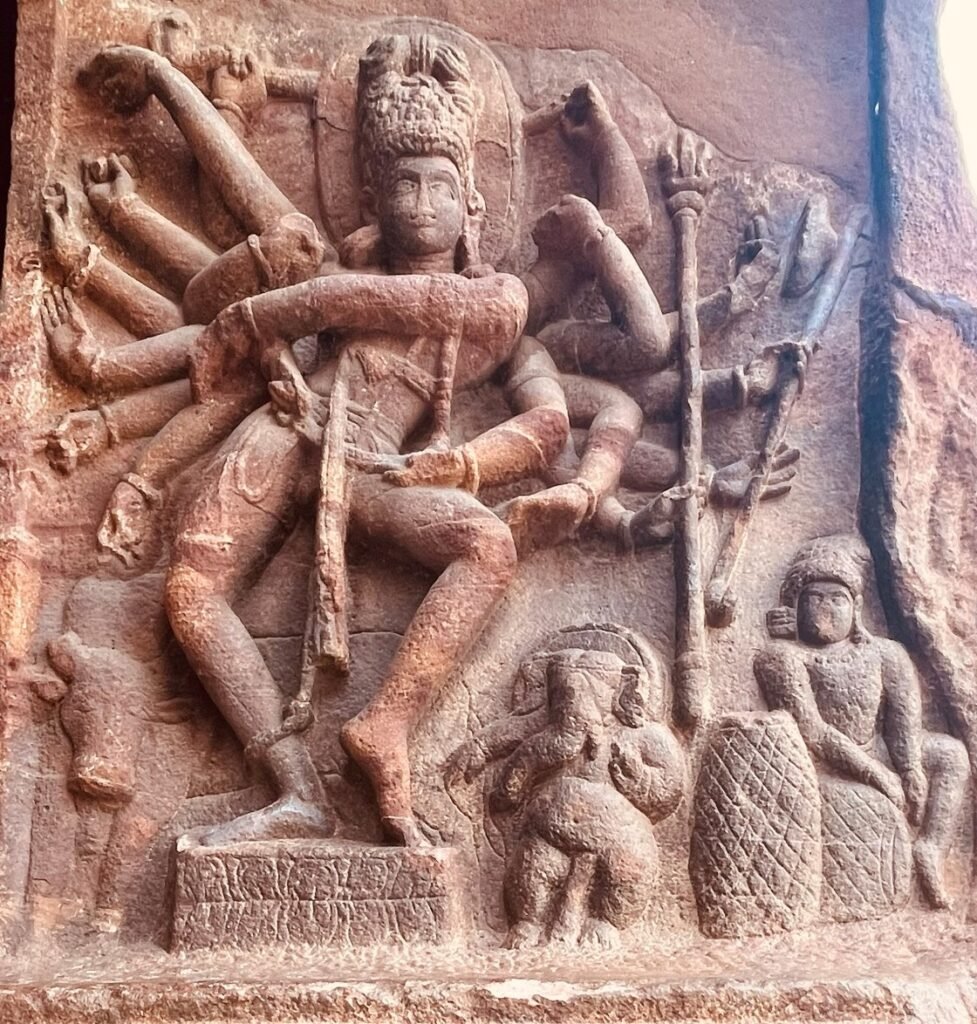A colleague’s wedding took us to the northern plains of Karnataka and I grabbed the opportunity to club a visit to the spectacular ancient temple towns of Badami, Pattadakal and Aihole. Badami, called Vatapi in ancient times, was the capital of the prominent Chalukya dynasty, who ruled the fertile basin of the Malaprabha River (a tributary of Krishna) and much of southern and central India for centuries.

This circuit is not the usual ancient monuments tour. This is considered the cradle of Hindu rock architecture and the first experiments for cave temples and structural ones were done here. A visit to these is like going through the primary school for temple making!!
After the wedding, we reached the dusty and seemingly nondescript town of Badami and stayed at the lovely KSTDC Mayura Chalukya.
The next day we wondered how to travel locally since the hired cars were costly and the state buses too slow. The hotel manager came to our rescue and connected us with a local Tempo. These can carry up to seven people. So, the five of us were seated quite comfortably. The Badami Cave Temples, located just 1kms from the hotel were our first stop.
Badami is at the mouth of a ravine between two sandstone hills. These imposing steep monolithic cliffs surround a manmade lake named the Agastya Teertha. Starting at the base of Cave I, one cannot visualize the grandeur initially, as the other caves are hidden behind. There are four caves and only after ascending the connecting flight of steps, one can get a glimpse of the next one.
The first and the earliest cave is dedicated to Shiva and Shakti and boasts an intricate sculpture of Shiva in the Tandava posture with eighteen arms amongst the other sculptures. The second and the third caves are dedicated to Vishnu with carvings of him in various avatars like Varaha (boar), Trivikrama, Vamana (dwarf) and Vishnu seated on Sheshnaga. The third cave is the largest with the most intricate details and even features coloured fresco paintings on the ceilings, which are some of the earliest surviving frescos in Indian art. The fourth is a Jain cave with ornate pillars and beautiful sculptures of Tirthankaras. With so much beauty around, one literally forgets where to look. Each and every corner showcases an exquisite use of the chisel.

The other side of the lake has a detailed museum and the Bhutnatha and Mallikarjuna group of Temples. A steep trek beside the museum leads to the top of the hill which houses the Shivalaya Temple. The remarkable idol of ‘Lajja-Gauri’ in the museum is worth mentioning. As we stood on the steps of the Bhutnath temple, which lead us down to the lake, we were mesmerized by the sweeping views of the red hills and their caves across the green waters.
It’s worth visiting in the monsoons as the Agastya Lake is so full that the Bhutnath Temple appears to be half submerged in it. A waterfall also forms on the cliff behind it cutting a stunning picture in green, brown and white!!
Soon it was time for lunch. Nagraj, our tempo driver had taken it upon himself to guide the bunch of ‘naïve’ travellers. Hence our safe option of having lunch at Badami was completely brushed aside. He had planned something special for us at Pattadakal. By now, the bone-shattering motion of the tempo was taking a toll on us and we just gave in. However, we soon realized that having an enthusiastic driver has its own perks!! He took us somewhere we would have surely ignored given the humble entrance of the eatery with tin sheets and torn curtains. After strict instructions from Nagraj, we were greeted by one of the most sumptuous meals in North Karnataka ever! Rice, sambar, jawar roti, badhane gojju (brinjal gravy), huruli palya (horsegram curry), batate palya (potato curry), kai chutney (coconut chutney), mango pickle, holige (puranpoli) and mosaru (curd)!! I had four cups of the homemade mosaru served with shenga chutney pudi (peanut chutney powder).
(Continued)
Link to Part II















One Response